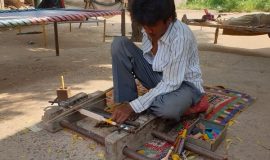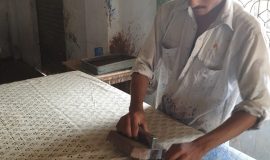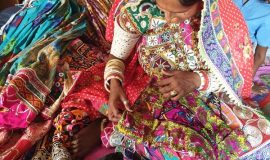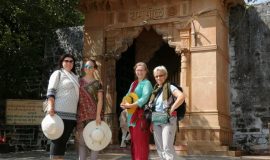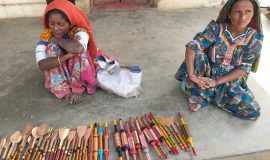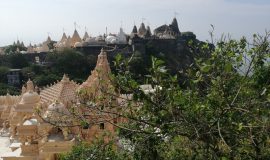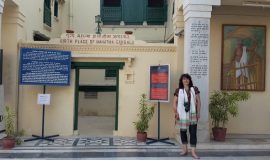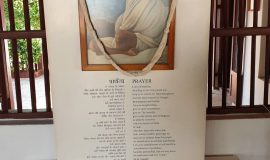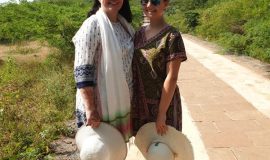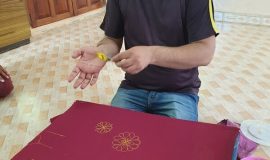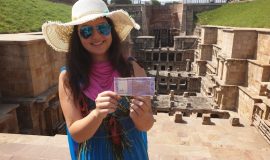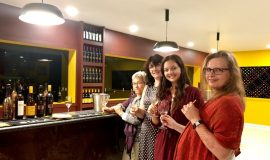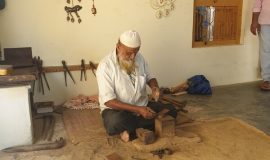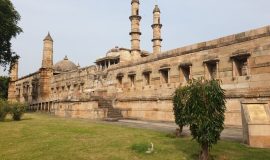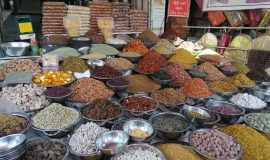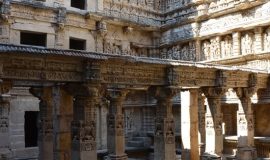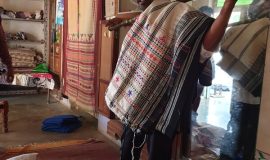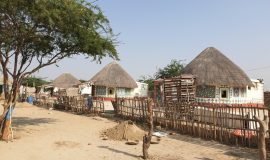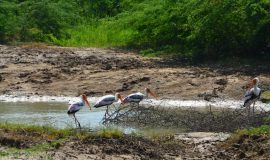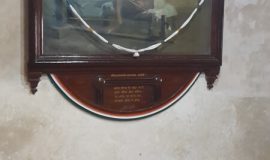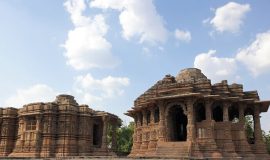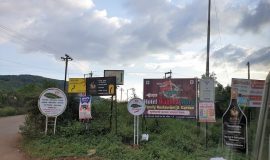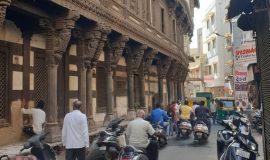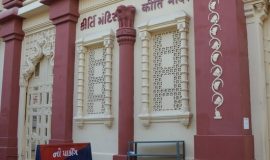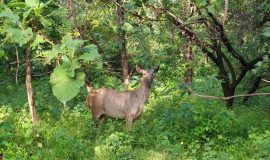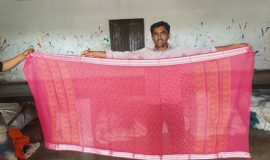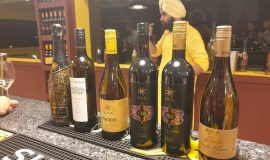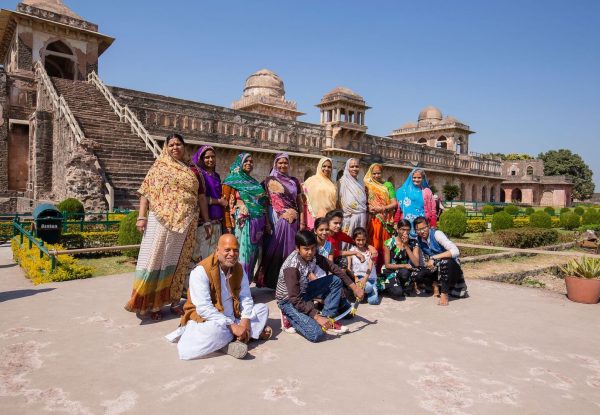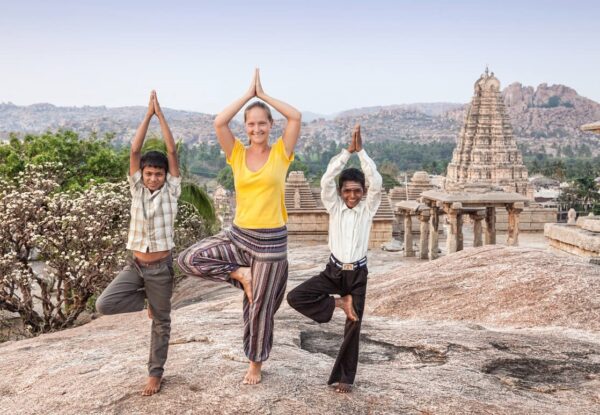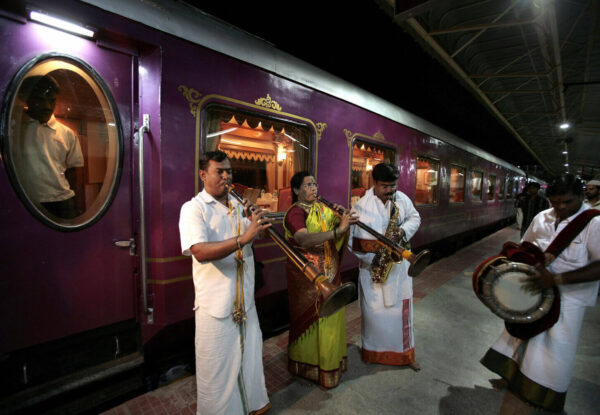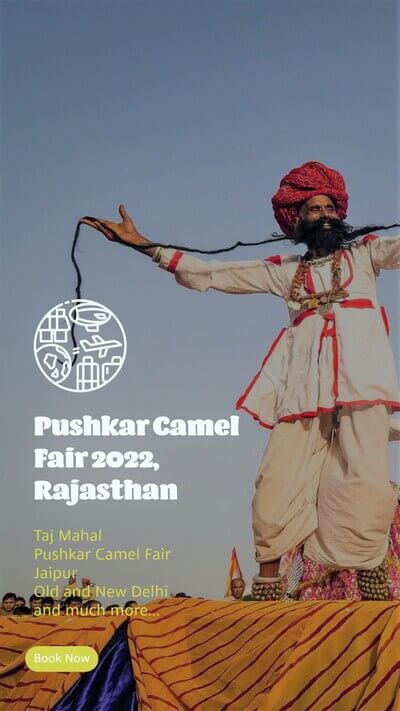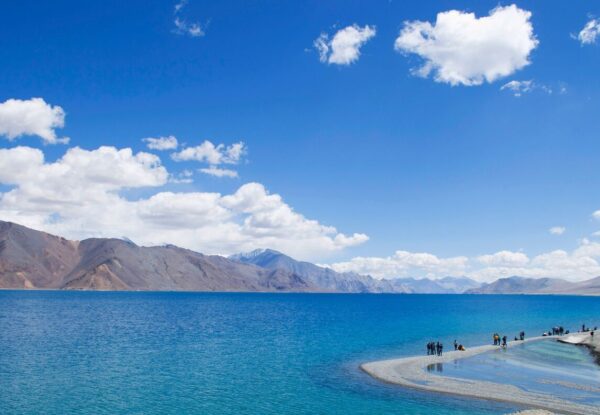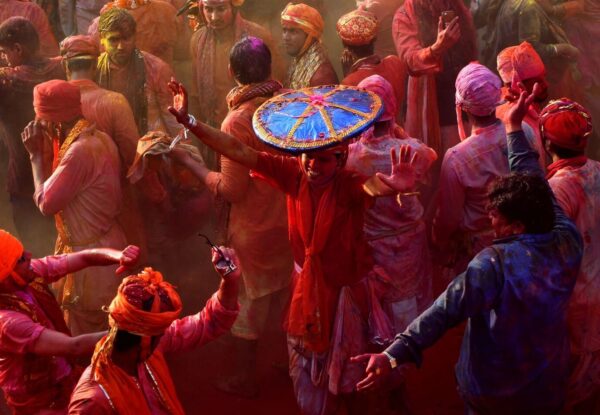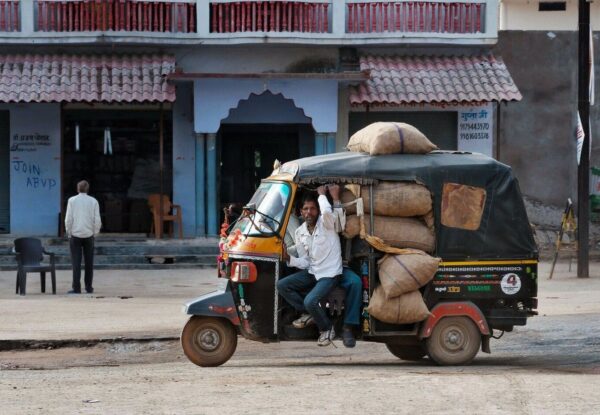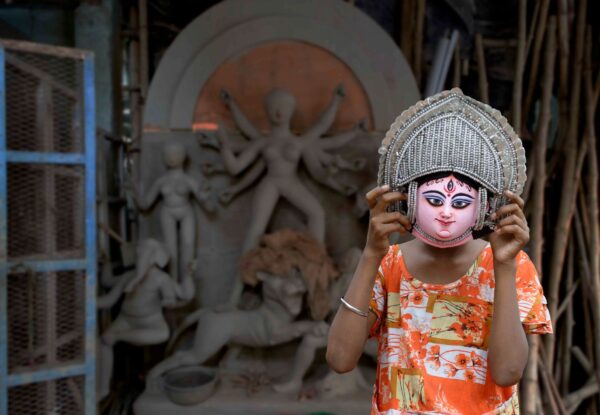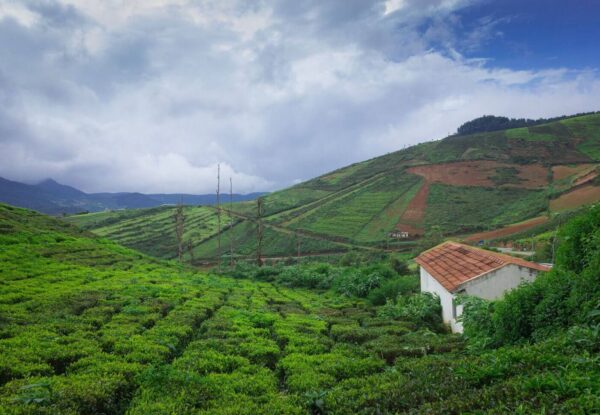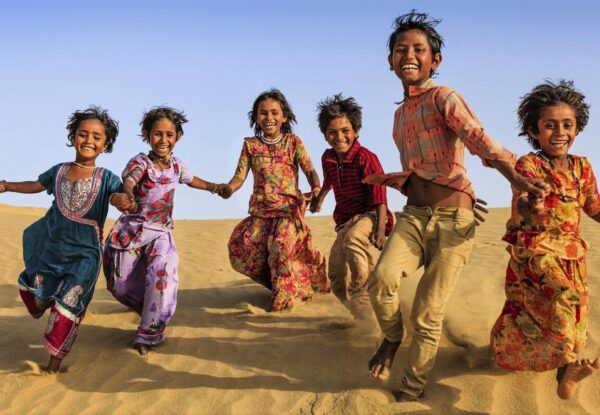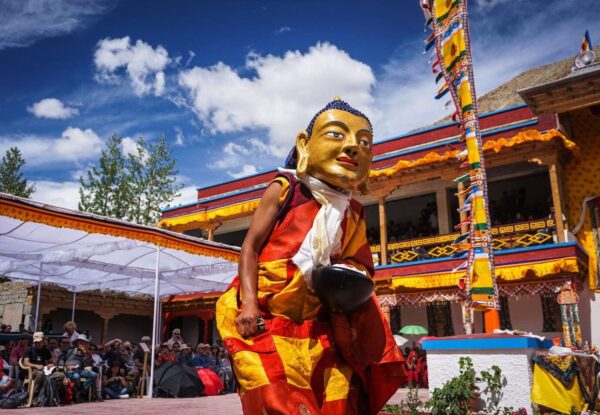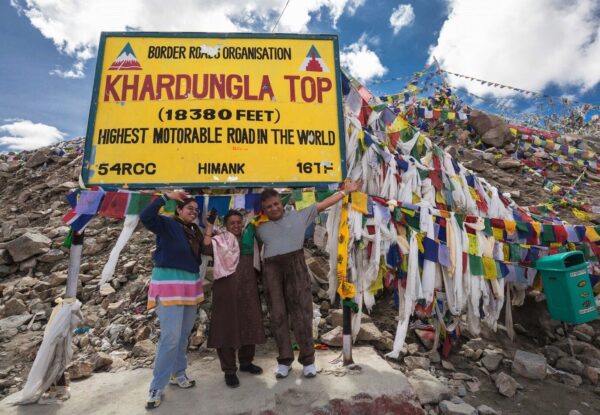Highlights of the West India Cultural Tour – Mumbai, Ajanta & Ellora and Gujarat
Trip Details
Our West India Highlights tour will take you off the beaten track usually taken by tourists to a journey across Gujarat and Maharashtra, where you will find some of the most beautiful textiles, fabrics, and secret treasures and gems of India. You are assured of an exceptional experience that will be forever etched in your memory. Explore history and civilizations from the beginning of time going back 5000 years, up to modern India’s independence. You see majestic palace hotels and be captivated as you meet and interact with exotic tribes, visit ancient caves & temples, see colorful textiles and natural spectacles such as the Asiatic lions. This trip is sure to enchant and delight you!
- Mumbai is where it all begins. Your 15-day road trip through Western India will take you to the University of Mumbai, the High Court and Chhatrapati Shivaji Terminus, magnificent buildings with their colonial-era architecture. A must-see in Mumbai is Dhobi Ghat popularly known as the World’s largest open-air laundry
- Visit Dharavi Slums, the center of a substantial amount of thriving small enterprises in Mumbai
- Marvel at the Kailasa Temple, an intricately carved and beautiful ancient rock –cut temple located in the historic Ellora Temple Complex
- Enjoy the centuries old Buddhist art as you experience a serene atmosphere in the ancient cave galleries of Ajanta, thought to be the occasional home of the Buddhist monks
- Travel to Gujarat, the most western state of India, known as “ Jewel of Western India” with an unbelievable 5000 years of unbroken history
- Hang out in the capital city of Ahmedabad, where the world’s best textile museum is found and Mahatma Gandhi’s Ashram. Uncover the secrets of Pols as we take the heritage walk
- Learn of northwest Gujarat and how the seasonal wetlands of Kutch convert to harsh salt plains in the summer and the Little Rann – home of the Asiatic wild ass and large groups of lesser and greater flamingos
- Track the passage of sewing from the cultural center of Ahmedabad to Kachchh the textile hub, where customs originate and end with variety, respect and commitment. Occupy your time with local craftsmen and artisans and see how the weaving of top-quality textiles offers economic freedom and creates character in the people of India
- Spend an unforgettable night at a tent resort in a serene place on a fantastic strip of Mandvi Beach that extends from the splendid Vijay Vilas Palace
- Take an adventurous forest safari on the hunt for a glimpse of Asia’s only wild lions at Sasan Gir Wildlife Sanctuary
- Watch thousands of pilgrims climbing up 2000 steps at dawn to the hilltop Jain temples of Shatrunjaya in Palitana and wake in a palace at Gondal by the riverside
- Unearth the hidden secrets of the Indus Valley Civilization of Dholavira and Lothal, where India’s story started over 4500 years before
- Visit the Laxmi Vilas Palace at Vadodara, one of the most magnificent palaces on earth belonging to the Maratha and British regime
- Shop as you go and enjoy the amazing sights and delightful cuisines of Marathi and Gujarati

India your way, your route, your style
• Price based on two persons in a double room
• Prices are in USD Excluding international flights
• Do you prefer to travel alone or would you like to come to India with a group of friends? We will be happy to tailor-made your tour program that meets all your wishes and needs
| Travel Period | PRICE PER PERSON | |
|---|---|---|
| Apr 1, 2024 – Mar 31, 2025 | from $2995 (Deluxe) | INQUIRE NOW |
| Apr 1, 2024– Mar 31, 2025 | from $3395 (Luxury) | INQUIRE NOW |
Would you like to have the trip tailored to your wishes?
Our itineraries are only examples and suggestions and can be customized individually. For example, a trip can be shortened or extended with additional destinations or monuments, the hotels can be a mix of 4 and 5 star etc. Let us know your personal wishes so that we can adapt the trip to your wishes. Connect with our travel expert for a 1:1 consultation and receive your obligation free travel proposal. Together with the travel request we will send you the hotel list so that you can get a picture of the hotels selected on the internet. We promise ✔Competent and Friendly Guides ✔Expert Drivers ✔Best Hotels ✔24/7 Support. Read more on Why Vacation India?
Get in Touch: info@vacationindia.com / +91-99274-65808 (India Calling & Whatsapp) / USA/Canada: 1 (888) 414-6804
Included in the price
- 20 Days tour starting in Mumbai and ending in Ahmedabad
- 19 nights’ accommodation in mentioned hotels or similar with daily breakfast.
- Surface Travel by exclusive air-conditioned MPV Toyota Innova Car
- All transfers & sightseeing as per the itinerary by air-conditioned MPV Innova Car
- Private Airport Transfers
- Permit to visit Banni Villages
- 1 Jeep Safari in Rann of Kutch
- 2 Jeep Safaris in Sasan Gir National Park
- Entrances Fee and Permit to Rann of Kutch and Sasan Gir National Park
- Services of a Naturalist in Rann of Kutch and Sasan Gir National Park
- Entrance fee to all monuments as per the program
- Mineral water (1 litre) per person per day during roundtrip
- An excellent English-speaking local guide shall be provided for the sightseeing tours
- Representative for assistance on all arrival and departure transfers
- All applicable taxes and service charges
- All taxes, driver allowances, parking, fuel charges, interstate taxes, tolls etc
Not included in the price
- International Flight
- Domestic Flights
- Lunch and Dinner
- Any other services not mentioned in the inclusions
- Visa & Insurance
- Expense of personal nature like tipping, laundry, telephone/fax calls, alcoholic beverages, camera/video camera fee at monuments, medical expenses, etc.
Adventure West India - Round trip through Gujarat
**This review was written in German and has been translated using Google Translator
Once again we entrusted the team of vacationindia.com and Vikas with the planning of our trip to explore West India. All our specifications, wishes and expectations were fully met. And so we could enjoy our trip to the fullest without any problems or difficulties.
Our now fourth trip to India led us to Gujarat. We followed in the footsteps of the father of the nation – Mahatma Gandhi – and got to know the Jain religion by visiting the temple city in Palitana; we looked over the shoulders of the craftsmen in the Banni tribal villages and tried to spot the lions in the thicket of the Gir National Park; we took breathtaking photos in the most incredible buildings, e.g. in the Sun Temple of Modar. e.g. in the sun temple of Modhera or in the Stepwell Rani-Ki-Vav and relaxed on the deserted beach of Mandhvi; we enjoyed a good wine in the Sula-Vinyards and visited the busy alleys of Ahmedabad on foot on the Heritage Walk. The many experiences were topped off with flavorful cuisine and very tasty food. We enjoyed the best thalis at Vishalla Restaurant and House of MG in Ahmedabad and are a must for anyone visiting this city.
We started in Ahmedabad with a walking tour of the city on the Hertiage Walk and a visit to Sabamarti Ashram. On the way to Little Run of Kutch, we visited the Sun Temple in Modhera and the most incredible fountain I have seen, Rani-Ki-Vav.
On our jeep safaris in the Little Rann of Kutch, we discovered an amazing variety of birds and visited the Wild Ass Sanctuary.
We interrupted the long drive to Mandvi for small stops in the villages of Dhamadka and Dhaneti. Here cloth is still being printed by hand using the old traditional block printing technique. Of course, some cloths changed hands here.
Meeting the people in the Banni tribal villages left a great impression. They live in round mud huts called “Bhunga”. These are artfully decorated inside with paintings or small mirror artworks. We discovered embroideries in the Harijana community, in the village of Nirona we could watch a master of the centuries-old art “Rogan” at work, listen to the melodious production of copper bells of the Lohar tribe and watch how the Vadhas tribe transforms wood with colorful paints into household goods.
Probandar, is actually off the typical route and doesn’t have that much to offer in terms of tourism. However, if you are interested in the life and work of Mahatma Gandhi, you must make a stop here. The birthplace and the neighboring Kirti Mandir, a memorial to Mahatma and his wife were our destination here.
Now the visit to Gir National Park was on the agenda for us. We were looking forward to two safaris and a great photo with a lion. Good luck!
The holy mountain Shatrunjaya of the Jains with almost 900 temples is one of the pilgrimage sites of the Jains. Every devout Jain should reach the top of the mountain once in his life. And we also wanted to enjoy the sight of the temples and the view over the country. To reach this goal, only about 3500 steps had to be conquered. Whew! Due to the great heat, one should start the ascent before 8 o’clock and take enough to drink on the way. Even though it took us a little longer than planned to climb, we all still made it to the top. Yes, we were all quite proud and happy.
Thank you for the many new unforgettable impressions we were able to gather on this tour. And it definitely makes you want to do more. Vikas, promised the next trip will not be long in coming. We are already full of anticipation.
Trip through Gujarat
First a big thank you to our trip organizer and another thank you to Vikas and his team who were responsible for the actual execution. India is big and has a lot to offer in terms of interesting buildings, different crafts and culture. We decided to do a round trip through Gujarat. For me it was the first time and these big contrasts between the cleanliness e.g. in the temples and the many garbage outside I found frightening. But the people are very hospitable and the country is worth seeing. The support during our trip worked wonderfully. It was an interesting experience and I was able to look beyond my own nose again. Sabine
TOP FOR INDIVIDUAL TRIPS
My husband and I have made a total of three trips with Mr. Vikas Agarwal’s agency so far:
2015 – South India Kochi to Chennai plus Andaman Islands
2016 – Gujarat
2018 – Maharashtra with Mumbai plus Goa
From planning to execution, everything was always great. All our wishes were taken into account. The hotels selected on the tours were great, the cars we used to travel with were modern and comfortable. The drivers all spoke fluent English.
Mr. Vikas is always available during the trip, via mobile phone, Whatsapp or e-mail. He speaks excellent German.
If you want to visit India as a couple or in small groups, then Mr. Vikas’ agency is the best choice! Everything works wonderfully.
If we do another round trip in India, then definitely only with him! Thank you, dear Vikas!
To receive the list of Hotels selected for this tour, please email us at info@vacationindia.com
Keywords: Gujarat Tour with Ajanta and Ellora, Ajanta and Ellora Caves with Gujarat Tour
Similar Tours You May Like
India Impressions
Mumbai ➜ Aurangabad (Ajanta & Ellora Caves) ➜ Indore ➜ Mandu ➜ Maheshwara & Omkareshwar ➜ Ujjain ➜ Bhopal ➜ Bhimbetka Caves and Bhojpur ➜ Jhalawar ➜ Rawatbhata ➜ Bundi ➜ Chittorgarh ➜ Mumbai or Delhi
Best of Kashmir and Leh Ladakh
Fly from New Delhi to Srinagar (Kashmir) ➜ Gulmarg ➜ Pahalgam ➜ Sonamarg ➜ Kargil ➜ Mulbekh ➜ Lamayuru Monastery ➜ Likir ➜ Sangam Viewpoint (Confluence of Zanskar and Indus Rivers) ➜ Spituk ➜ Magnetic Hill ➜ Leh ➜ Khardung La ➜ Nubra Valley ➜ Diskit ➜ Hunder ➜ Turtuk ➜ Lake Pangong Tso ➜ Chang La ➜ Hemis ➜ Thiksey ➜ Leh ➜ Fly from Leh to New Delhi
Holi Festival Tour 2024 – Holi in Vrindavan and Pushkar
Old Delhi and New Delhi ➜ Mathura ➜ Agra ➜ Jaipur ➜ Pushkar ➜ Deogarh Mahal Palace Hotel ➜ Rankpur ➜ Udaipur ➜ New Delhi
Treasures of Central India (15 days)
New Delhi ➜ Indore ➜ Dhar ➜ Mandu ➜ Omkareshwar ➜ Maheshwara ➜ Ujjain ➜ Bhopal ➜ Sanchi and Udaygiri ➜ Bhimbetka Caves and Bhojpur ➜ Jabalpur ➜ Bandhavgarh Tiger National Park ➜ Khajuraho ➜ Orchha ➜ Jhansi ➜ Datia ➜ Sonagiri ➜ Gwalior ➜ Chambal Wildlife Sanctuary ➜ New Delhi + Optional tour of Taj Mahal
East India Sojourn – Kolkata, Darjeeling and Sikkim (13 days)
Kolkata ➜ Darjeeling ➜ Sikkim ➜ Pelling ➜ Kalimpong ➜ Kolkata
South India Wildlife and Trekking Tour
Madikeri (Coorg) ➜ Nishani Motte Trek ➜ Namdroling Monastery ➜ Kabini Wildlife Sanctuary ➜ Nagarhole National Park ➜ Ooty ➜ Pollachi ➜ Anamalai Tiger Reserve or Parambikulam Tiger Reserve ➜ Munnar ➜ Eravikulam National Park Madurai ➜ Chinnar Wildlife Sanctuary (Thoovanam Waterfalls) ➜ Madurai (Meenakshi Temple) ➜ Chennai
Family Holidays in India with Kids – Perfect for Family Adventure Holidays
Old and New Delhi ➜ Ranthambhore National Park ➜ Abhaneri Stepwell ➜ Agra (Taj Mahal, Baby Taj, Tuk-tuk tour, Red Fort) ➜ Hill Station Shimla ➜ Toy Train from Shimla to Solan (a ride in a UNESCO World Heritage listed Train carriage) ➜ Prakriti Farms (Chandigarh) ➜ Mumbai
From Manali to Leh: Tour the Sights of Ladakh
New Delhi (Start), Amritsar (Punjab), Mcloead Ganj (Dharamshala), Manali, Keylong via Rohtang La Pass, Tso Kar, Leh, Hemis Monastery, Thiksey Monastery, Leh Palace, Shanti Stupa, Phyang Monastery, Alchi, Likir, Diskit Monastery, Nubra Valley, Pangong Tso via Shyok River, New Delhi (End)
Kashmir Leh Ladakh India Tour (13 Days)
New Delhi (Start), Srinagar (Kashmir), Dachigam National Park, Sonmarg, Lamayuru, Alchi, Likir, Thiksey Monastery, Leh Palace, Shanti Stupa, Phyang Monastery, Nimmu Village, Shang Valley, Hemis Monastery, Khardung La Pass, Nubra Valley, Lake Pangong, Tso Moriri, New Delhi (End)


